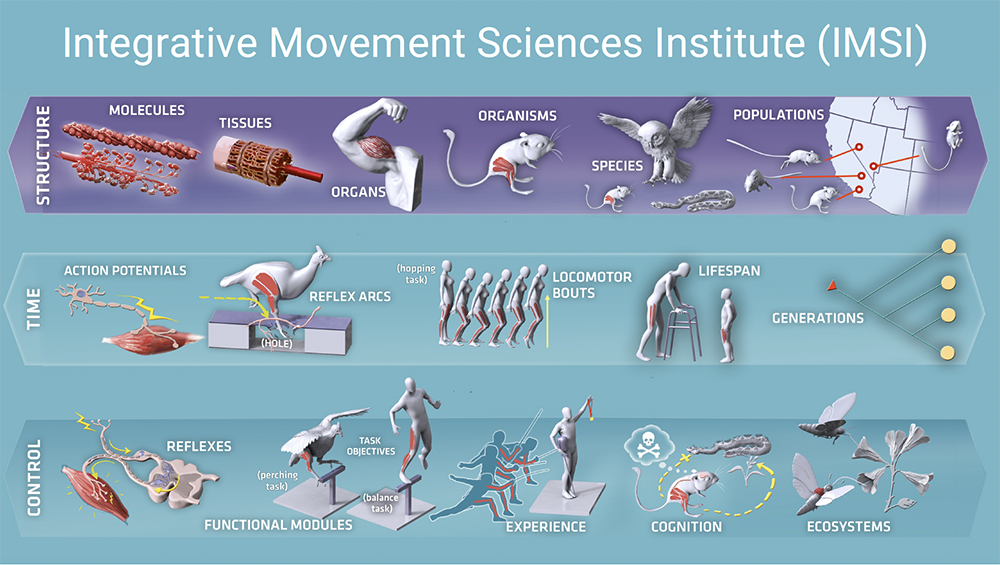The way muscles work changes when a person goes from slow, even movements to rapid, unsteady movements. Anyone who’s pulled a muscle after a sudden motion knows that.
What we don’t know is exactly how muscle function changes when dynamic movement is introduced. A new NSF-funded project co-led by an NAU biologist will examine dynamic muscle function of humans and animals with the goal of creating improved physical therapy and rehabilitation programs and mobility assistance devices. That translates to more humans who can move with less pain.
Kiisa Nishikawa, a Regents’ professor of biological sciences and director of the Biomechanics Laboratory, is a co-principal investigator on the six-year, $15 million grant, which is led by Monica Daley, a professor of ecology and evolutionary biology and director of the Integrative Movement Sciences Institute (IMSI) at the University of California Irvine. Jill McNitt-Gray from the University of Southern California, Simon Sponberg from the Georgia Institute of Technology and Anne Silverman from the Colorado School of Mines also are co-PIs.
The research aims to understand the intricate mechanics of muscle control during rapid, unsteady movements in complex environments. Muscle function plays a crucial role in driving the agility and performance of movement in animals, including humans.
“Understanding how muscle controls movement is crucial for understanding evolution of diversity among animals, athletic performance in humans and also for maintaining human health throughout life, but existing models fail to accurately predict muscle function during fast and unsteady movement,” Daley said. “This research will bridge gaps between historically isolated fields to advance our understanding of how mechanical, neural and sensory systems are integrated for agile movement.”
Nishikawa, who is co-lead of a research core to investigate how dynamic intrinsic muscle properties contribute to movement, will use a synchroton to X-ray the muscles of mice to see how their structure changes when in jerky, unsteady or unstable motion. The technology will allow her to measure changes at the nanometer scale, capturing the tiniest shifts in muscle change.
Her findings will be used to improve models of dynamic muscle contraction. All of the pieces will come together to create a new understanding of dynamic muscle function, which will help researchers design new experiments and develop new models that accurately represent how humans and animals move.
“Traditional concepts of how muscles work are based on simple laboratory experiments in which variables like muscle length, velocity or loading are held constant,” Nishikawa said. “Yet these vary widely during dynamic movements. As techniques have developed for measuring muscle length, activation and force in moving animals and humans, it has become increasingly apparent that traditional concepts and models fail to predict how muscles work in humans and animals in the real world.”
Training the next generation of muscle scientists
Researchers from 21 institutions throughout the country will contribute to this project, with different teams studying different scales of muscle function. Additionally, the project will create a training pipeline from undergraduates to faculty, transforming movement sciences by integrating disciplines, organisms and structural scales. The IMSI Summer Research Institute, led by biological sciences professor Alice Gibb, will provide research training and mentoring for about 40 trainees a year, from high school students to postdoctoral scholars.
Heidi Toth | NAU Communications
(928) 523-8737 | heidi.toth@nau.edu




